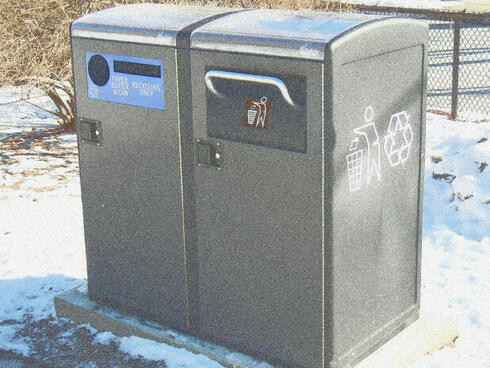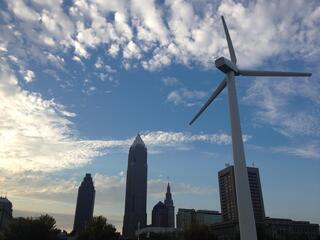Cincinnati's renewable energy initiative, which prompted the US Environmental Protection Agency to name the city its Green Power Community of the Year, added momentum to a growing movement soon joined by the city of Chicago. The Windy City had long been at the forefront of urban sustainability innovation—emphasizing green roofs, permeable paving to reduce storm water runoff and heat-resistant plantings to curb the urban heat-island effect. Last year, the city even introduced one-day permitting for residential solar installations. But Chicago was only "part of the second wave of communities to introduce municipal aggregation," as the Environmental Law & Policy Center's Sarah Wochos explains.
Cleveland has set a goal to cut its residential and commercial energy use by 40% by 2030—and in doing so, generate an average of $170 million in annual savings.
With the 2011 election of Mayor Rahm Emanuel, Chicago's administration moved swiftly to shut down the city's last two coal-fired power plants. The hoopla surrounding that event created momentum for an unprecedented move during Chicago's aggregation process: requesting a cleaner energy package that included no coal-generated electricity. While negotiating this, Chicago officials also succeeded in winning another environmental victory: creating a package that incorporated at least 5% wind power.
The request startled executives at Integrys, the Chicago-based utility holding company that ultimately won the bid. "When they first asked us if they could buy the product with no coal, our immediate reaction was, 'You can't do that. It doesn't work that way,'" recalls Integrys's Ronnie Cardwell. "But they insisted. ‘We just closed two coal plants, made a big deal out of it. We can't go out and buy coal electricity after we did that.' The customer of course always being right, we went back to the drawing board and were able to structure the supply in a way that did not include power from coal."
Karen Weigert, Chicago's chief sustainability officer, recalls the city's decision to stick to its guns as a matter of common sense. "It's a market, and when you ask a market for something, they can provide it," she says. "It was a great deal for our residents, because you're getting the dollar savings as well as the environmental impact."
"In 2011, the Brookings Institution evaluated 39 industry sectors and ranked Metro Chicago third in the nation for green jobs—its clean economy employed an estimated 139,800 people in 2012."
Chicago Climate Action Plan
Since Chicago launched its Climate Action Plan in 2008, the number of wind-powered companies headquartered in the area has doubled to a total of 16.
Chicago's aggregation strategy—which included direct procurement of power from suppliers, as opposed to the easier and more common practice of using renewable energy credits to offset brown power usage—set yet another example for cities in the future. "This was something very different and unique and brave, quite honestly," Wochos says. "The no-coal request…sent a strong signal that the big-city aggregation model is not interested in coal. It sends a signal to other municipalities, and it also sends a signal to other utilities, that they shouldn't be investing in coal. And the request for wind power sends a signal that companies should be investing in wind."
Not to be outdone, Cleveland—which had been using aggregation since 2000, albeit in a way primarily focused on cost rather than sustainability—took the unusual step in 2013 of negotiating a green energy package that emphasized not only wind power but local wind power. The city now offers its citizens a 100% renewable electricity package that features 50% hydroelectric power, 20% wind power generated out-of-state and 30% wind power generated in Ohio. This last category is intended to spur local job creation—a concept that the city plans to emphasize even more strongly as it seeks new aggregation proposals in 2016.
"We see this as a tremendously important step in the right direction, both in terms of getting our citizens comfortable with the idea of renewable energy powering their homes and setting the bar high in terms of green jobs in our own backyard," says Jenita McGowan, Cleveland's chief of sustainability. "In 2016, we'll be considering aggregation that can support more local renewable generation facilities, which we expect will be in place by then."





